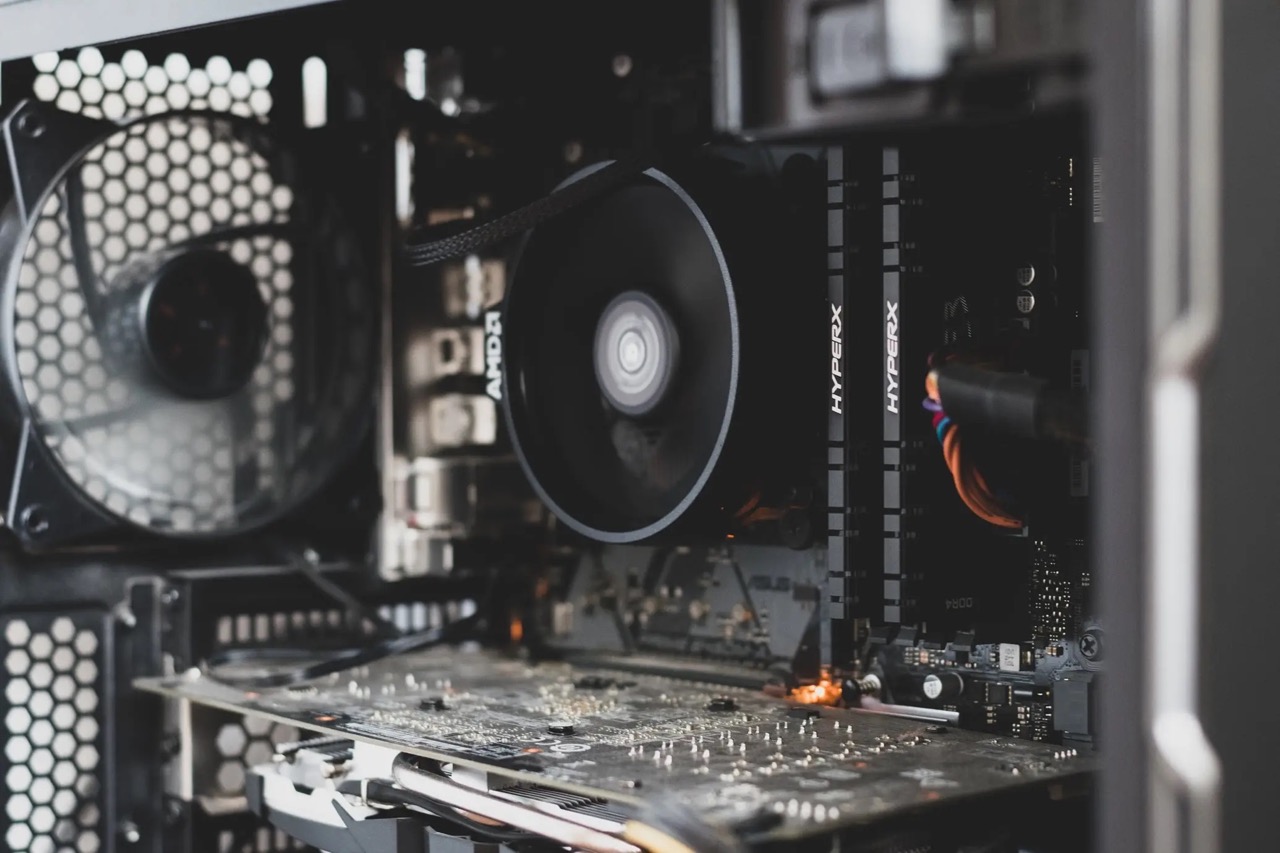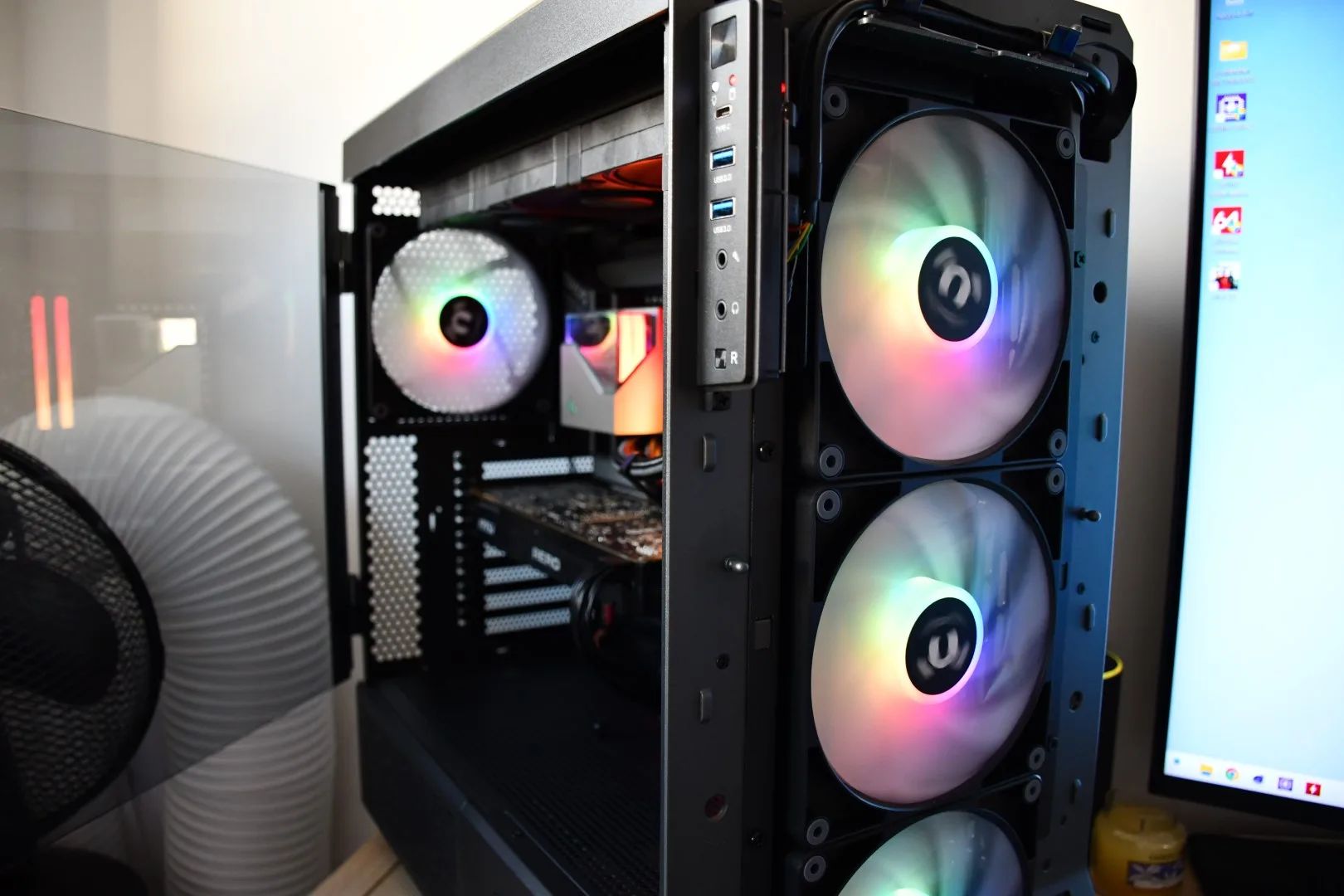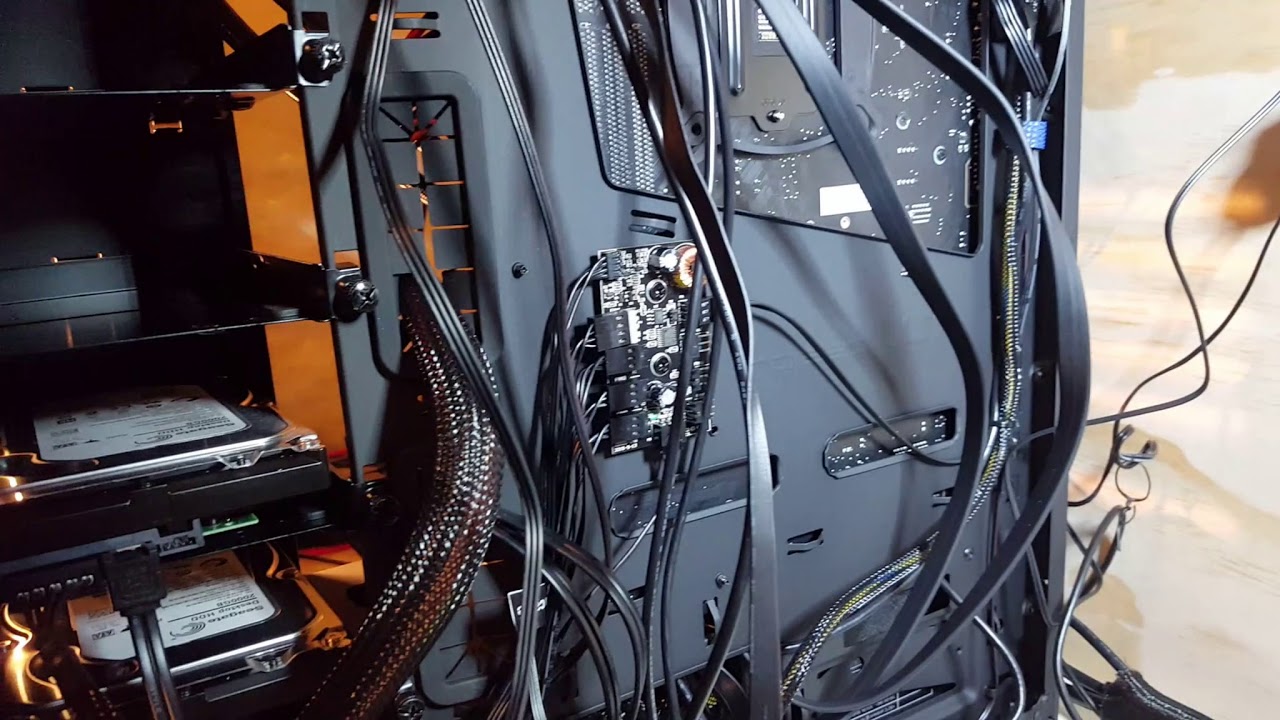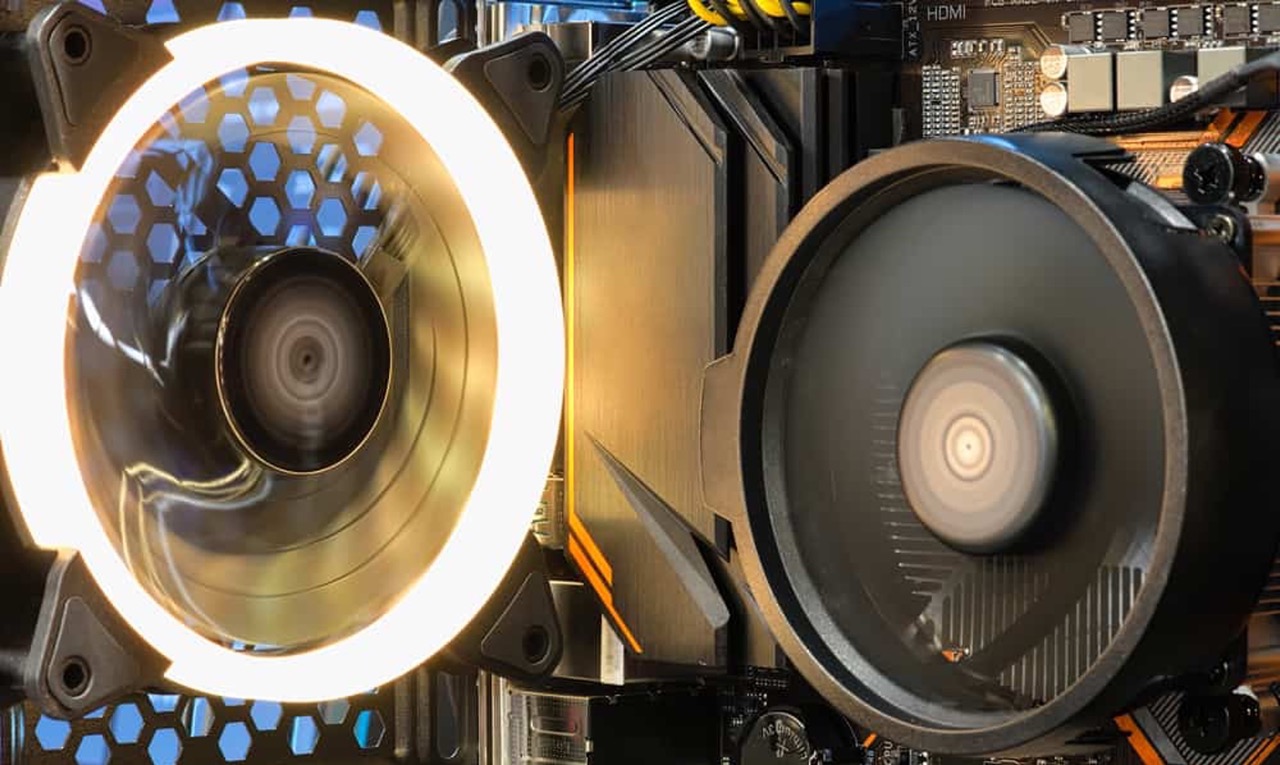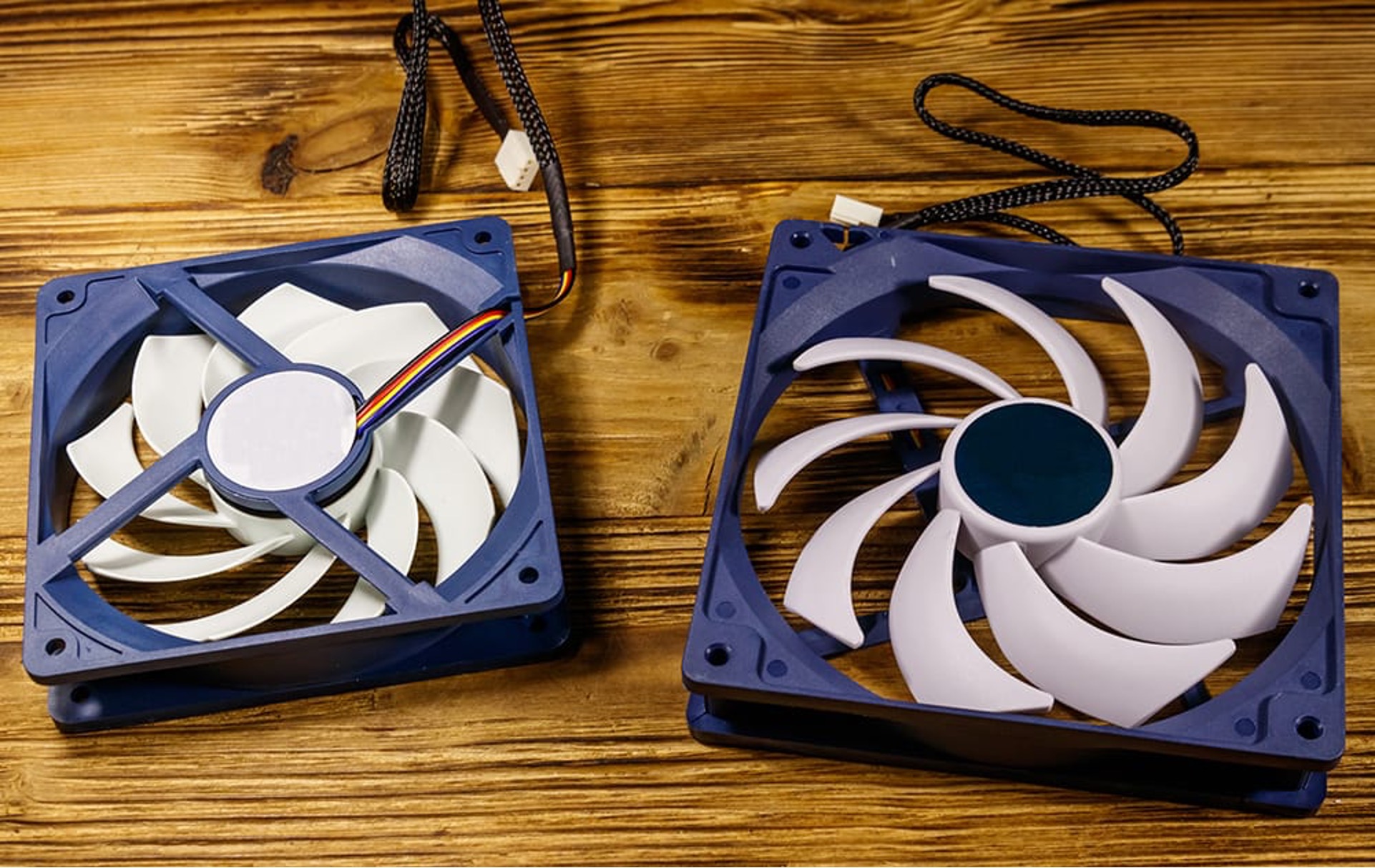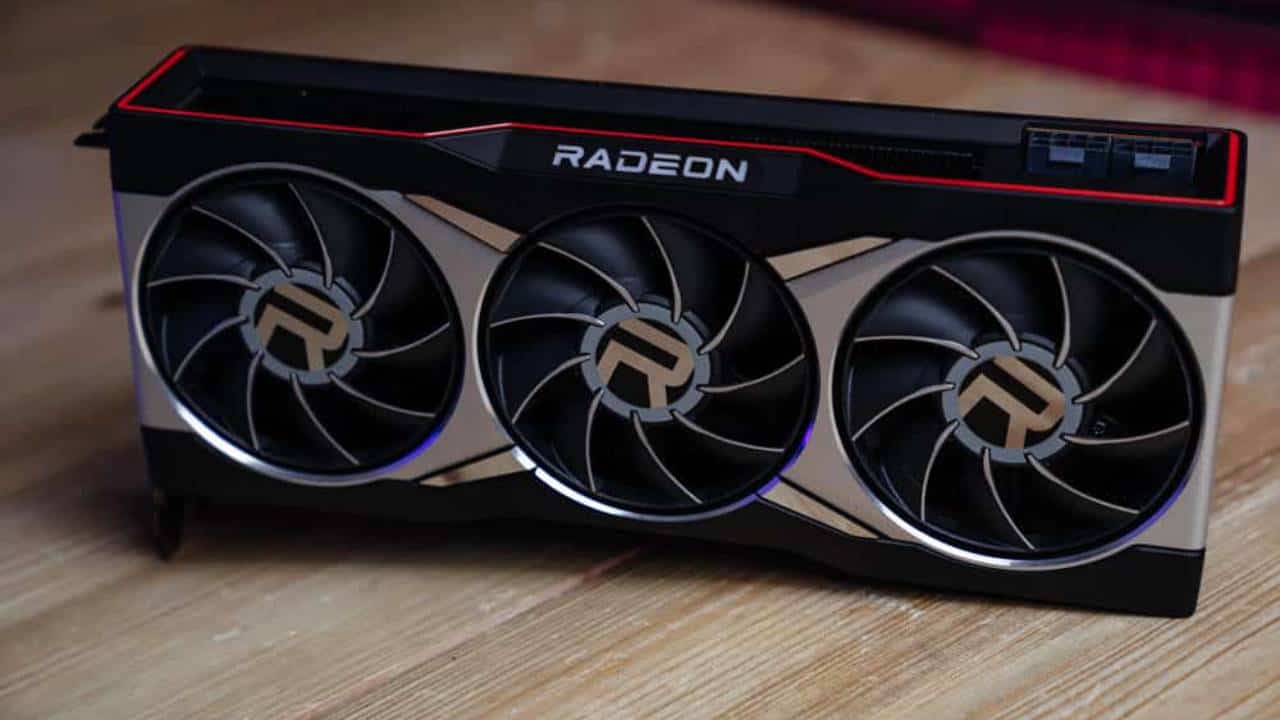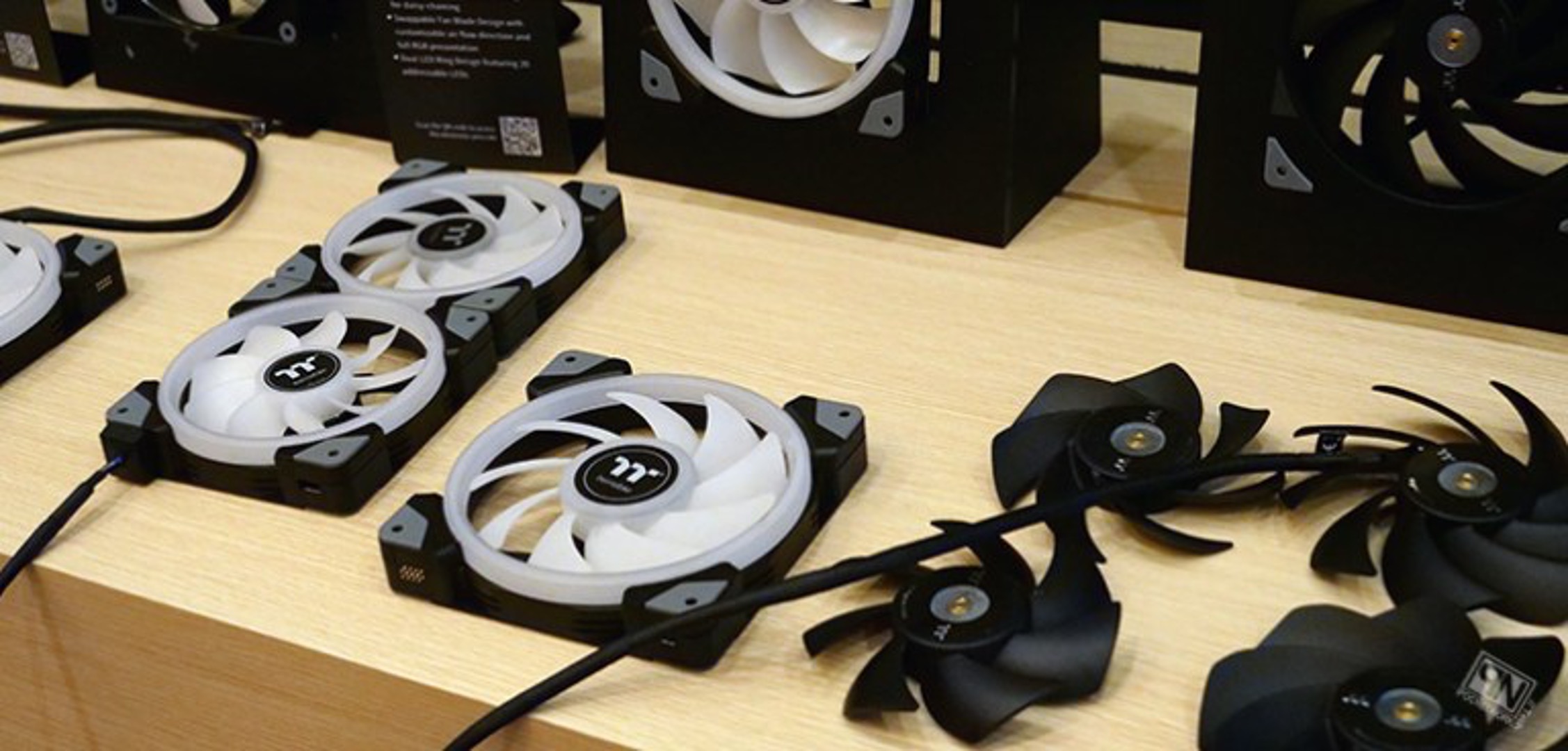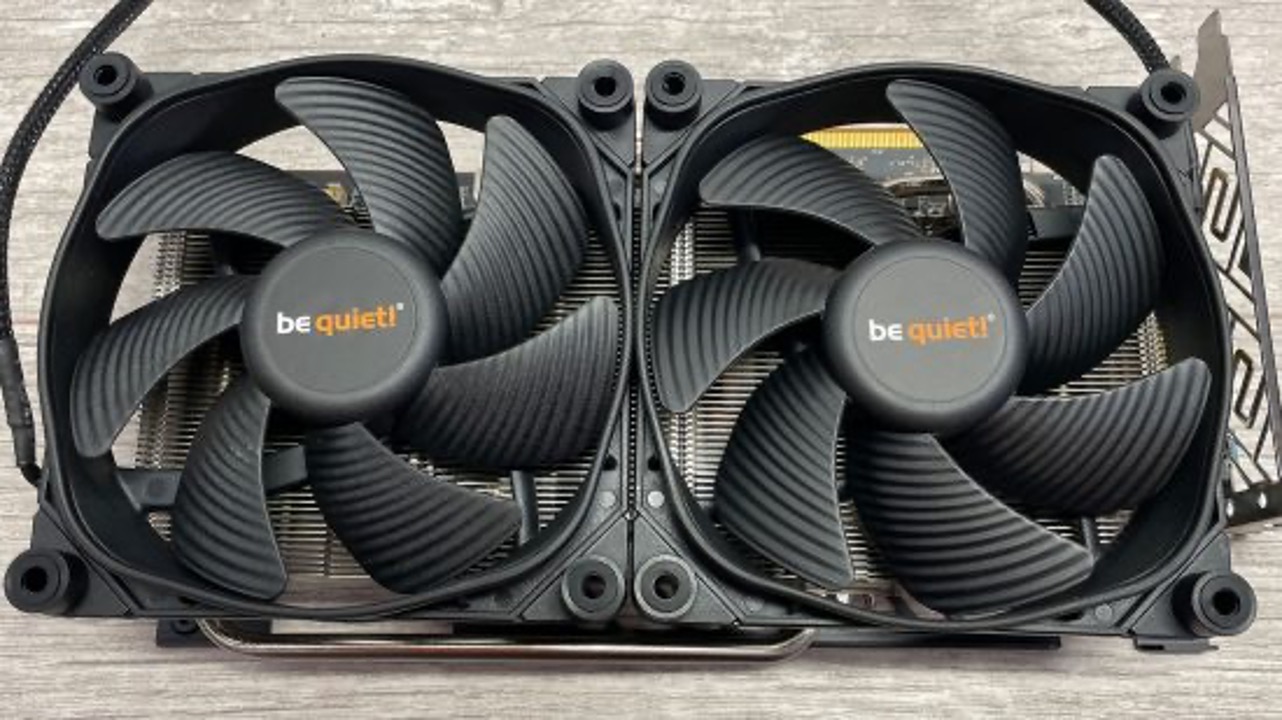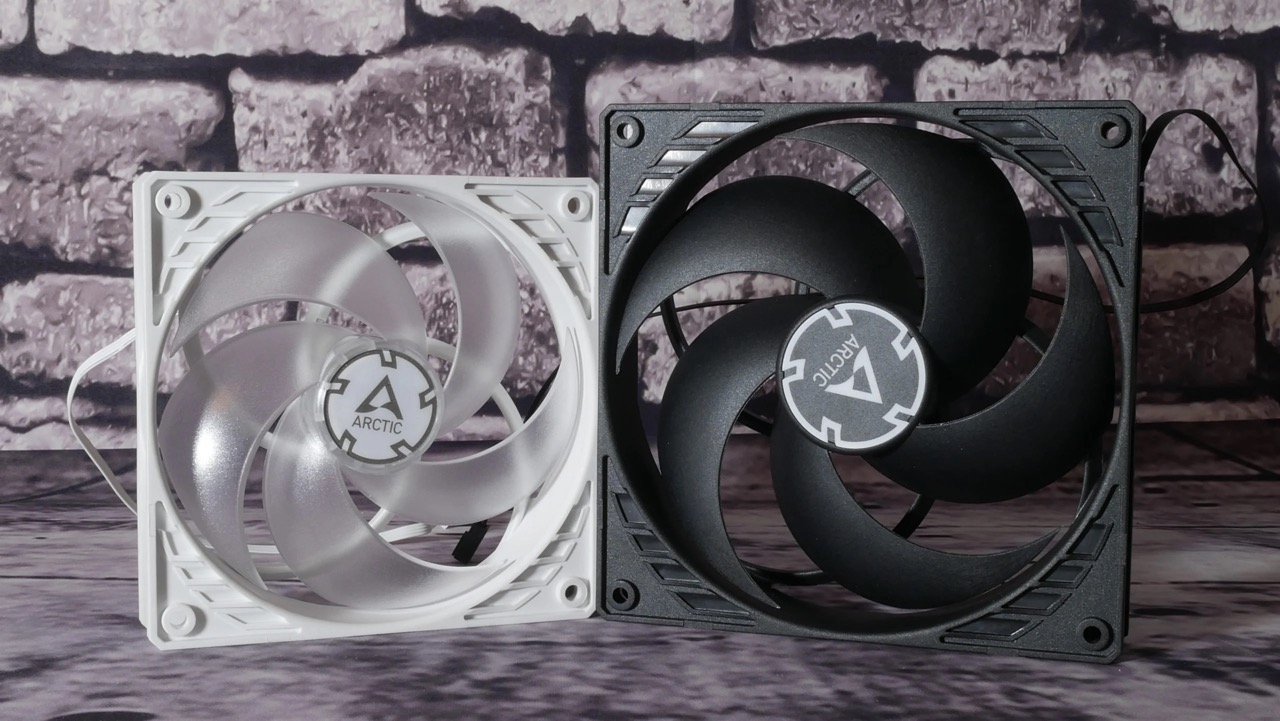Introduction
Welcome to the world of case fan speed control! When it comes to managing the airflow and temperature inside your computer case, controlling the speed of your case fans is crucial. By adjusting the fan speed, you can optimize the system’s cooling performance, reduce noise levels, and prolong the lifespan of your components. In this article, we will explore the various methods available to control your case fan speeds and help you find the best solution for your needs.
Whether you are a gaming enthusiast, a content creator, or a tech-savvy individual, keeping your computer cool and operating efficiently is of paramount importance. The faster your components run, the more heat they generate, and excessive heat can impact performance and even lead to system damage. That’s where case fans come to the rescue, dissipating the heat and improving airflow within the case. However, if left at their default settings, these fans can be noisy or may not provide adequate cooling, which is why having control over their speeds is essential.
There are several methods available to control case fan speeds, each with its own advantages and considerations. From using your motherboard’s BIOS settings to installing fan control software or investing in a dedicated fan controller hub, you have options that cater to various levels of customization and control. Each method has its own set of benefits and drawbacks, so it’s important to understand your requirements and the capabilities of your system before making a decision.
In the following sections, we will explore each method in detail, outlining the steps required and highlighting the key factors to consider. Whether you are a beginner looking for a simple solution or an experienced user looking for advanced customization, we have you covered. So, let’s dive into the world of case fan speed control, and find the perfect method to keep your system running cool and quiet!
Why is controlling case fan speeds important?
Effective management of case fan speeds is essential for several reasons. Let’s explore the importance of controlling case fan speeds and how it can benefit your computer system.
Temperature Regulation: One of the primary reasons for controlling case fan speeds is to regulate the temperature inside your computer case. As your components work harder, they generate more heat, which needs to be efficiently dissipated. By adjusting the fan speeds, you can ensure that the airflow is optimized, allowing for effective cooling and preventing overheating. This is particularly crucial when running demanding tasks such as gaming or video editing, as these activities can push your components to their limits, resulting in increased heat production.
Noise Reduction: Another significant advantage of controlling case fan speeds is the reduction in noise levels. While fans are essential for cooling, they can also be a source of unwanted noise. By adjusting the fan speeds, you can strike a balance between cooling performance and noise output. This is particularly important for those who desire a quiet computing experience, especially in environments such as offices or bedrooms where noise can be quite distracting.
Energy Efficiency: Controlling case fan speeds can also contribute to energy efficiency. Running fans at high speeds consistently requires more power, leading to increased energy consumption. By adjusting the speeds according to the system’s needs, you can reduce power consumption and potentially lower your electricity bills in the long run. This makes it an eco-friendly approach while still ensuring your system remains cool and functional.
Component Longevity: Properly controlling case fan speeds can extend the lifespan and reliability of your components. Excessive heat can damage sensitive parts, including the CPU, GPU, and motherboard. By ensuring efficient cooling, you help prevent components from overheating, reducing the risk of premature failure and costly repairs or replacements. This is especially crucial for those who invest in high-performance systems and want to protect their valuable hardware investments.
Customization and Control: Finally, controlling case fan speeds gives you the freedom to customize and fine-tune your system’s cooling performance. Different tasks and scenarios may require varying levels of cooling, and having control over the fan speeds allows you to adapt to these specific needs. Whether you prefer silent operation during light usage or maximum cooling during intense gaming sessions, adjusting the fan speeds gives you the flexibility to optimize your system’s performance based on your preferences.
All in all, controlling case fan speeds is not only important but also advantageous for maintaining optimal system performance, reducing noise levels, saving energy, ensuring component longevity, and providing customization and control. By implementing the right fan speed control method, you can create an optimized and comfortable computing environment that meets your specific needs.
Different Methods to Control Case Fan Speeds
There are several methods available to control case fan speeds, each offering unique features and capabilities. Let’s explore these methods in detail and understand how they can help you achieve optimal cooling and airflow within your computer case.
Method 1: Using the motherboard’s BIOS settings: Many modern motherboards come equipped with built-in fan control options within the BIOS settings. This method allows you to adjust fan speeds based on temperature thresholds or manually set specific speeds for individual fans. Accessing the BIOS and navigating to the fan control section will enable you to make the desired adjustments. This method provides basic fan speed control and is ideal for users who prefer a simpler approach without the need for additional software or hardware.
Method 2: Installing fan control software: Fan control software provides a more advanced and customizable way to manage case fan speeds. These software applications allow you to fine-tune fan curves, set up profiles for different usage scenarios, and even monitor temperature readings and fan RPM in real-time. Popular software options include SpeedFan, CAM, and MSI Afterburner. Installing software gives you more precise control over fan speeds and the ability to create personalized fan profiles based on your specific cooling requirements.
Method 3: Using a fan controller hub: A fan controller hub is a hardware device that allows you to control multiple case fans simultaneously. It connects to your motherboard or power supply and provides dedicated knobs, switches, or buttons to adjust fan speeds. Fan controller hubs often offer more control options, such as manual adjustments, pre-set fan profiles, and even the ability to monitor fan RPMs and temperature readings through built-in displays. This method is ideal for users who prefer physical controls and want to have a centralized fan speed control system.
Method 4: Using a fan speed controller: Similar to a fan controller hub, a fan speed controller is a standalone device that connects to one or more case fans. It typically features knobs or buttons to adjust fan speeds and may include additional features like temperature sensors, LED displays, or even remote control capabilities. This method provides independent control over individual fans and is an excellent choice for users who want precise control over their case fan speeds or wish to add a touch of style with customizable LED lighting.
Each method has its own set of advantages and considerations. When choosing a method to control case fan speeds, you should consider factors such as your level of control preference, budget, compatibility with your system, and the number of case fans you want to control. It’s also crucial to ensure that the method you select supports the necessary power and control connectors to connect with your case fans.
Now that we’ve discussed various methods for controlling case fan speeds, it’s time to evaluate which method best suits your needs. In the next sections, we will provide in-depth instructions and considerations for each method to help you make an informed decision.
Method 1: Using the Motherboard’s BIOS Settings
If you’re looking for a straightforward and built-in method to control case fan speeds, using your motherboard’s BIOS settings is a reliable option. Most modern motherboards feature BIOS options that allow you to adjust fan speeds based on temperature thresholds or manually set specific speeds for individual fans. Here’s how you can utilize this method to control your case fan speeds:
1. Access the BIOS: Restart your computer and press the designated key (usually Del, F2, or F12) during the boot process to access the BIOS settings. The key may vary depending on your motherboard model, so refer to your motherboard’s manual or manufacturer’s website for the specific key combination.
2. Navigate to Fan Control Options: Once in the BIOS, navigate to the section related to fan control or hardware monitoring. The name and location of this section may vary depending on the motherboard manufacturer and BIOS version. Look for terms such as “Fan Control,” “Hardware Monitor,” or “PC Health” in the BIOS menu.
3. Adjust Fan Speeds: Within the fan control options, you will find various settings to manage case fan speeds. Some motherboards may offer predefined profiles such as “Silent,” “Standard,” or “Turbo,” while others allow manual adjustments. If manual adjustments are available, you can set the fan speed percentage or choose from predefined RPM values for each fan. Additionally, some motherboards offer the option to adjust fan speeds based on temperature thresholds. This allows you to link fan speeds to specific temperatures, ensuring that your system remains cool under heavy loads.
4. Save and Exit: After making the desired adjustments, save the changes in the BIOS settings and exit. Your motherboard will apply the new fan control settings, and you can observe the impact on fan speeds and system temperature.
Using the motherboard’s BIOS settings to control case fan speeds provides a straightforward and reliable approach. It doesn’t require any additional software or hardware and allows for basic fan speed customization. However, it’s important to note that the level of control and customization available through the BIOS may vary depending on your motherboard model and BIOS version. Some motherboards provide more advanced options than others, so it’s worth exploring the available settings and experimenting to find the optimal configuration for your system.
If you prefer a more advanced and customizable method to control case fan speeds, consider exploring other options such as fan control software, fan controller hubs, or fan speed controllers. These alternatives provide greater flexibility and detailed control over fan speeds, allowing you to create custom fan curves, set up profiles, and monitor fan RPM and temperature in real-time. In the following sections, we will delve into these methods to provide you with a comprehensive understanding of the available options.
Method 2: Installing Fan Control Software
If you’re looking for more advanced customization and control over your case fan speeds, installing fan control software is an excellent option. Fan control software provides a range of features, allowing you to fine-tune your fan speeds, create custom fan profiles, and monitor temperature readings. Here’s how you can utilize this method to control your case fan speeds:
1. Research and Install Compatible Software: Research and select fan control software that is compatible with your motherboard and operating system. Popular options include SpeedFan, CAM, MSI Afterburner, and Open Hardware Monitor. Visit the software’s official website or trusted download platforms to download and install the latest version.
2. Familiarize Yourself with the Software’s Interface: Launch the installed fan control software and familiarize yourself with its interface. Most fan control software applications offer a user-friendly interface with intuitive options and settings. Take some time to explore the available features and understand how to navigate the software effectively.
3. Customize Fan Profiles: Fan control software allows you to create custom fan profiles tailored to your specific cooling requirements. These profiles typically include options to adjust fan speeds based on temperature thresholds or manually set specific speeds. Depending on the software, you may have the ability to create multiple profiles to switch between different usage scenarios, such as gaming, work, or idle mode.
4. Fine-Tune Fan Curve and Monitoring: Fan control software often provides the option to create custom fan curves, allowing you to set specific fan speeds at different temperature ranges. This feature enables you to optimize fan speeds based on the system’s cooling needs, ensuring efficient and effective cooling performance. Additionally, many fan control software applications provide real-time monitoring of fan speeds, temperature readings, and other system information, giving you valuable insight into your system’s performance and allowing you to make informed adjustments.
5. Save and Apply Changes: After customizing your fan profiles and fine-tuning the fan curve, make sure to save the changes within the fan control software. The software will then apply the new settings, adjusting the fan speeds accordingly based on your preferred profile.
Fan control software offers advanced control and customization, making it an ideal choice for users who desire precise management of their case fan speeds. With the ability to monitor temperatures, create custom profiles, and adjust fan speeds in real-time, this method provides optimal cooling performance and allows you to create a personalized computing experience tailored to your specific needs.
Keep in mind that compatibility with your motherboard and operating system is crucial when choosing fan control software. Ensure that the software you select supports your motherboard model and has compatibility with your operating system version. Refer to the software’s documentation or online forums for troubleshooting assistance or additional information.
In the next sections, we will explore other methods, such as using a fan controller hub or a fan speed controller, which offer different levels of control and customization for managing case fan speeds.
Method 3: Using a Fan Controller Hub
If you’re looking for centralized control over multiple case fans with physical knobs or switches, using a fan controller hub is an excellent option. A fan controller hub is a hardware device that allows you to control the speeds of multiple case fans simultaneously. Here’s how you can utilize this method to control your case fan speeds:
1. Choose a Compatible Fan Controller Hub: Research and select a fan controller hub that is compatible with your system and can support the number of case fans you intend to control. Consider factors such as the number of available fan headers, voltage control capabilities, and compatibility with your power supply unit.
2. Install the Fan Controller Hub: Install the fan controller hub in an available 5.25″ drive bay or a suitable location within your computer case. Ensure that you properly connect the power and control cables according to the manufacturer’s instructions. Some fan controller hubs may require additional power connectors directly from the power supply unit.
3. Connect Case Fans to the Fan Controller Hub: Connect your case fans to the fan controller hub using the provided fan cables. Plug each fan into the designated fan headers on the hub, ensuring a secure connection.
4. Adjust Fan Speeds: Once the fan controller hub and fans are properly installed and connected, you can begin adjusting the fan speeds. Most fan controller hubs feature physical knobs, switches, or buttons that allow you to control the speeds directly. Simply adjust the knobs or switches to increase or decrease the fan speeds according to your desired cooling requirements.
5. Monitor Fan Speeds: Some fan controller hubs provide built-in displays or LED indicators to monitor the fan speeds in real-time. Take advantage of these features to ensure that the fans are operating at the desired speeds and to keep an eye on any anomalies in the system’s cooling performance.
A fan controller hub offers centralized control over multiple case fans, allowing you to adjust their speeds simultaneously. This method is especially beneficial if you prefer physical controls and want an easy and quick way to manage your case fan speeds without relying on software-based solutions.
However, it’s important to ensure compatibility between the fan controller hub, your case fans, and your power supply unit. Verify the number and type of fan headers available on the hub to ensure they match the requirements of your case fans. Additionally, consider the power requirements of your case fans and ensure that the fan controller hub can supply sufficient power to run them all.
In the next sections, we will explore another method, namely using a fan speed controller, which offers independent control over individual case fans.
Method 4: Using a Fan Speed Controller
If you’re looking for individual control over each case fan with additional features such as LED displays or remote control capabilities, using a fan speed controller is an excellent option. A fan speed controller is a standalone device that allows you to control the speeds of your case fans independently. Here’s how you can utilize this method to control your case fan speeds:
1. Select a Compatible Fan Speed Controller: Research and choose a fan speed controller that is compatible with your system and has the desired features you’re looking for. Look for options that have sufficient fan headers to accommodate the number of case fans you want to control.
2. Install the Fan Speed Controller: Install the fan speed controller in a suitable location within your computer case. Depending on the model, you may need to mount it in an available 5.25″ drive bay or a specific slot dedicated to fan controllers. Ensure a secure and proper installation following the manufacturer’s instructions.
3. Connect Case Fans to the Fan Speed Controller: Connect your case fans to the fan speed controller using the provided fan cables. Plug each fan into its dedicated fan header on the controller, ensuring a secure connection. Pay attention to the labels indicating the corresponding fan headers.
4. Adjust Fan Speeds: Once the fans are connected, you can begin adjusting their speeds. Depending on the fan speed controller you’re using, you can control the speeds through knobs, buttons, or switches. Adjust the controls for each fan individually to set the desired speeds. Some fan speed controllers allow you to adjust the fan speeds manually, while others may offer preset speed profiles for easy customization.
5. Monitor Fan Speeds and Additional Features: Some fan speed controllers come with built-in LED displays or indicators that show the fan speeds in real-time. This feature allows you to monitor the speeds of each fan and ensure they are running as desired. Additionally, certain fan speed controllers may offer additional features like temperature sensors or remote control capabilities, adding further flexibility and convenience to your fan speed control setup.
Using a fan speed controller provides you with independent control over each case fan, allowing you to fine-tune the cooling performance for individual components or sections within your computer case. This method is particularly useful if you have specific cooling requirements for different parts of your system or if you prefer a more granular level of control over your fan speeds.
Remember to consider compatibility between the fan speed controller and your case fans. Ensure that the controller has enough fan headers to support the number of case fans you wish to control and that the power requirements match those of your fans. Additionally, verify if any additional power connectors are required from your power supply unit to the fan speed controller.
Now that we have explored various methods of controlling case fan speeds, you have a range of options to choose from based on your preferences and system requirements. In the next section, we will discuss some important factors to consider when choosing the most suitable method for managing your case fan speeds.
Factors to Consider When Choosing a Method
When choosing a method to control your case fan speeds, there are several factors you should consider to ensure the most effective and suitable solution for your needs. Here are the key factors to keep in mind:
1. Level of Control: Consider the level of control you desire over your case fan speeds. If you prefer a basic level of control, using your motherboard’s BIOS settings may be sufficient. However, if you want more advanced customization and real-time monitoring, fan control software, fan controller hubs, or fan speed controllers offer higher levels of control and flexibility.
2. Number of Case Fans: Evaluate the number of case fans you want to control. If you have only a few fans, using your motherboard’s BIOS settings or fan control software may be adequate. However, if you have multiple fans, using a fan controller hub or fan speed controller that can handle the desired number of fans will be more convenient and efficient.
3. Compatibility: Ensure compatibility between the method you choose and your system’s components. Verify that any software or hardware you use is compatible with your motherboard, operating system, and case fans. Check for supported connectors, power requirements, and any specific compatibility limitations mentioned by the manufacturer.
4. Ease of Use: Consider the ease of use of the method. If you prefer a simple and user-friendly approach, using your motherboard’s BIOS settings or fan control software with an intuitive interface may be preferable. On the other hand, if you enjoy physical controls and prefer a hands-on experience, a fan controller hub or fan speed controller with knobs or switches may better suit your preferences.
5. Additional Features: Take into account any additional features offered by the method. Some fan controllers, for example, may come with built-in temperature sensors, LED displays, or remote control capabilities. These additional features can enhance your fan speed control experience and provide added convenience or customization options.
6. Budget: Consider your budget when selecting a method. Some methods, such as using your motherboard’s BIOS settings or fan control software, are cost-effective as they utilize existing hardware. In contrast, fan controller hubs or fan speed controllers may involve an additional investment. Evaluate your budget constraints and determine the maximum you are willing to spend for controlling your case fan speeds.
7. System Aesthetics: If aesthetics are important to you, consider how the chosen method aligns with the visual appeal of your system. Fan controller hubs or fan speed controllers often feature attractive displays, LED lighting, or sleek designs that can complement your computer’s overall aesthetic. Choose a method that not only provides the desired functionality but also enhances the visual appeal of your system.
By considering these factors, you can make an informed decision when choosing the most suitable method to control your case fan speeds. There is no one-size-fits-all solution, and what works best for one person may not be ideal for another. Take the time to evaluate your needs, preferences, and system requirements to ensure an optimal cooling solution for your computer case.
Conclusion
Controlling case fan speeds is a crucial aspect of maintaining optimal cooling and performance for your computer system. Whether you want to regulate temperature levels, reduce noise, improve energy efficiency, or prolong the lifespan of your components, having control over your case fan speeds is essential.
In this article, we explored various methods to control case fan speeds. Using your motherboard’s BIOS settings offers a simple and built-in approach, while installing fan control software provides more advanced customization options. Fan controller hubs and fan speed controllers offer centralized and individual control over multiple fans, respectively, with additional features to enhance your fan speed control experience.
When choosing a method, consider factors such as the level of control you desire, the number of case fans, compatibility with your system, ease of use, additional features, budget constraints, and how it aligns with your system aesthetics.
Remember, there is no one-size-fits-all solution, and the best method for controlling case fan speeds varies based on individual preferences and system requirements. Take the time to evaluate your needs, explore the available options, and choose the method that suits you best.
Ultimately, by effectively managing your case fan speeds, you can optimize cooling performance, reduce noise levels, save energy, protect your components, and create a comfortable and efficient computing environment.
So, embrace the control over your case fan speeds and embark on the journey to a well-cooled, quiet, and high-performing computer system!







